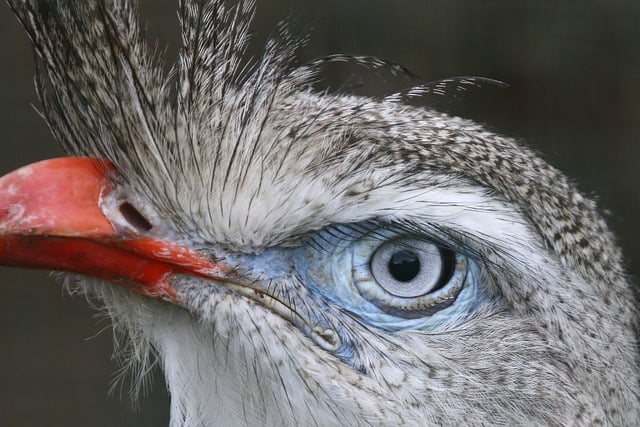When we think about nature’s wonders, birds often stand out for their vibrant colors and dazzling plumage. But did you know that these same birds can see colors that we humans can’t even imagine? Birds possess a visual superpower: their ability to perceive a broader spectrum of colors, including ultraviolet (UV) light. This gives them an incredibly rich and vibrant view of the world, quite different from what we experience.
While humans perceive colors through three types of cones in their eyes (red, green, and blue), birds have a fourth type of cone that allows them to see colors beyond our wildest imagination. This ability to see in the ultraviolet spectrum gives them a much broader color range.
How Do Humans See Colors?
Before we dive into how birds see the world, let’s quickly recap how human vision works. Our eyes have trichromatic vision, which means we have three types of cone cells that detect different wavelengths of light: red, green, and blue. These cones combine to let us see a wide range of colors, from the reds of a sunset to the blues of a clear sky. However, our vision is limited compared to many animals, including birds, because we lack the ability to perceive ultraviolet light.
Birds Have Tetrachromatic Vision
What sets birds apart is their tetrachromatic vision. Birds have four types of cone cells in their eyes, allowing them to detect not just red, green, and blue, but also ultraviolet light. This fourth cone expands their color range significantly, giving them the ability to see a spectrum of colors that are invisible to humans.
For instance, while we may see the feathers of a peacock as simply iridescent, birds can perceive intricate UV patterns that are crucial for communication and mating displays. These patterns act as signals to other birds, even though they’re invisible to the human eye.

Why Do Birds Need to See More Colors?
So, why do birds have this extraordinary visual capability? The answer lies in survival. Birds use their UV vision in several essential ways:
- Mating Selection: Many bird species rely on their plumage to attract mates. However, it’s not just the colors we see that matter. Birds with UV vision can detect UV-reflective patterns on feathers, which are often indicators of health and vitality. For example, female starlings prefer males with UV-reflective feathers, as this signifies good genes and better fitness.
- Foraging and Hunting: UV light also helps birds spot food. Some fruits reflect UV light, making them stand out against green foliage. Certain insects and prey, especially those with UV-reflective markings, are easier to detect when birds are foraging. This ability provides a distinct advantage for species like kestrels, which use UV light to track the trails of small rodents.
- Navigation and Orientation: UV vision helps birds navigate their environments. The UV radiation from the sun scatters in the atmosphere, creating visual cues that birds use for orientation during flight. This ability is particularly beneficial for migratory birds that rely on celestial navigation.
Birds with the Best Vision
While all birds benefit from enhanced color vision, some species have particularly impressive eyesight:
- Pigeons: Pigeons are known to have the best color vision among animals. Their eyes contain more cone cells than most other birds, giving them the ability to see more colors and distinguish between subtle variations in hues. This makes them exceptional at navigating complex environments and identifying objects from a distance.
- Hummingbirds: These tiny, energetic birds use their UV vision to select flowers with the highest nectar content. Research shows that hummingbirds can detect minute differences in flower colors that are invisible to humans, allowing them to find the best food sources quickly and efficiently.
- Raptors (e.g., eagles and hawks): Birds of prey, such as eagles and hawks, have exceptional vision that allows them to spot prey from miles away. While their ability to see long distances is well-known, they also have enhanced color perception that helps them identify camouflaged prey.
Evolutionary Significance of Birds’ Color Vision
Over millions of years, birds evolved this superior color vision as an adaptation to their environment. The ability to perceive UV light is particularly useful in habitats where visual signals play a critical role in survival. From the vibrant tropical rainforests to the open skies, UV vision helps birds interact with their surroundings more efficiently.
Birds that rely heavily on plumage displays for mating, such as peacocks and birds of paradise, have developed more intricate feather patterns visible in the UV spectrum. Meanwhile, predatory birds have honed their vision to detect the slightest movements of prey even in low-light conditions, thanks to their ability to see a broader range of light.
The next time you look up and see a bird soaring through the sky or perched in a tree, remember that they’re experiencing a world of color far beyond what we can perceive. Birds’ ability to see ultraviolet light gives them a distinct advantage in everything from finding food to selecting mates. Their tetrachromatic vision opens up a vibrant and colorful world that remains hidden from human eyes.
As we continue to study animal sensory systems, we learn more about the astonishing capabilities of our feathered friends. Birds’ enhanced vision is a testament to the incredible diversity of life on Earth and how different species have adapted to their unique environments.

